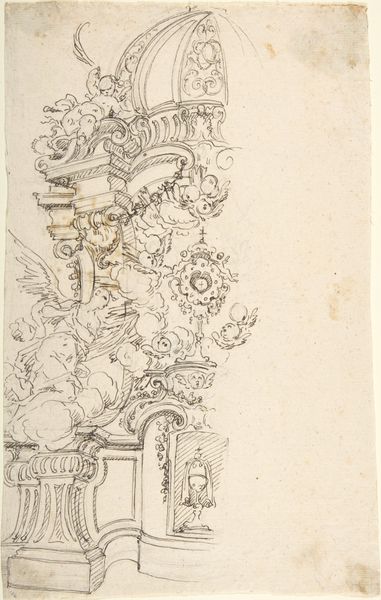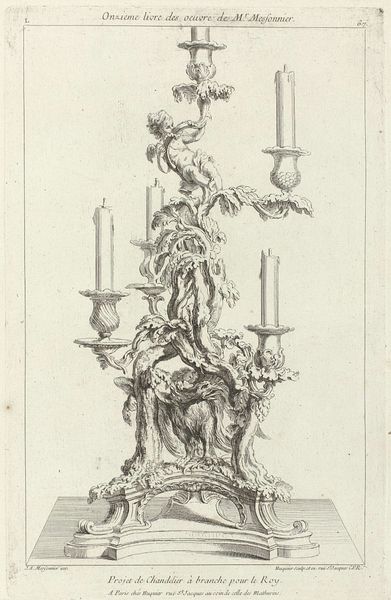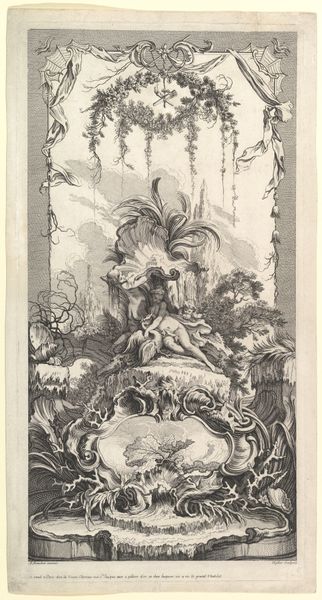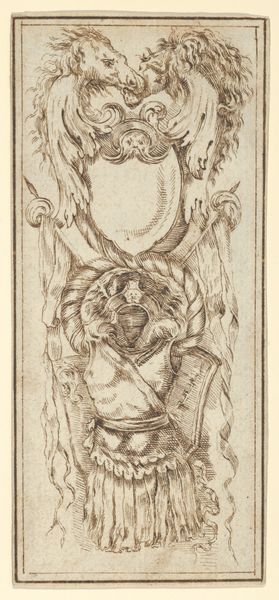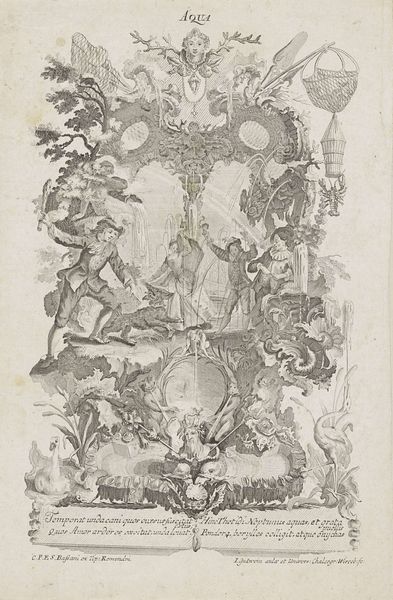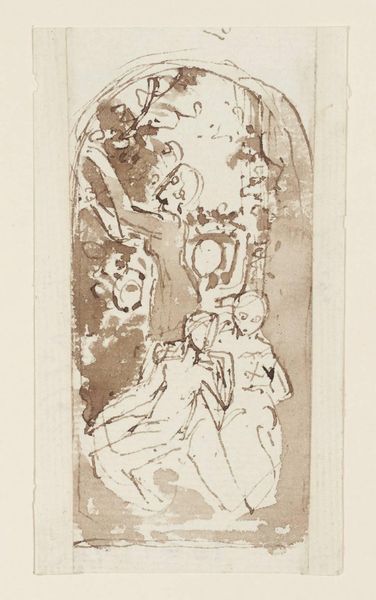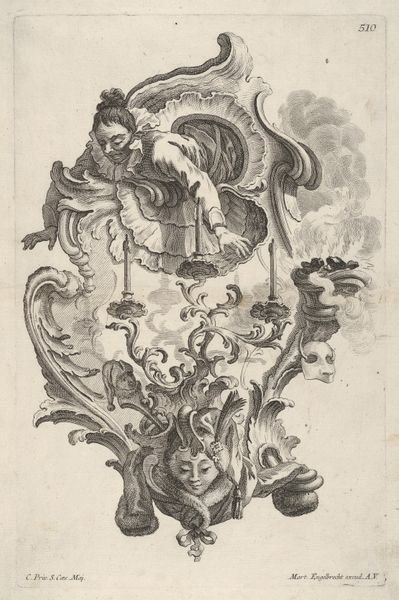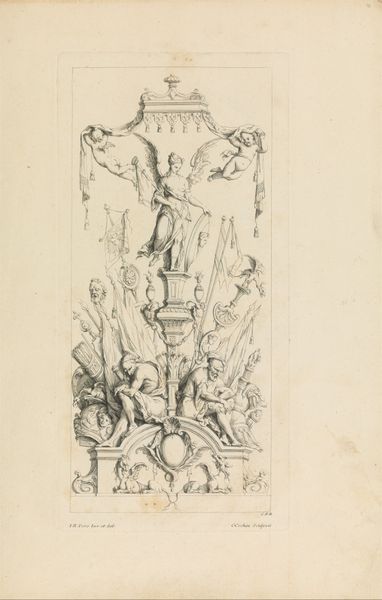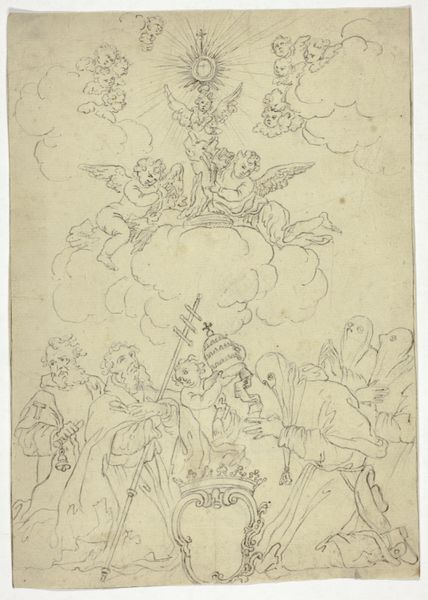
drawing, print, etching
#
drawing
# print
#
etching
#
symbolism
Copyright: Public Domain: Artvee
Editor: Here we have James Ensor's etching from 1888, "Kroonkandelaar en vaas," depicting a candlestick and vase. It feels quite intimate and a bit dreamlike. What stands out to you when you look at it? Curator: What immediately strikes me is the conscious choice of etching as a medium. Ensor wasn’t aiming for slick perfection. Instead, he embraced the potential of the etched line, a process requiring labor and specific skill. See how the varying densities of lines create form and shadow? This isn't just about representing objects; it's about engaging with the physical properties and social implications embedded in the act of printmaking. Editor: So you're seeing the technique as important as the image? Curator: Precisely. Consider the cultural context. Etchings, with their comparative accessibility, circulated widely. This piece isn't necessarily destined for a wealthy collector. It suggests Ensor may be playing with notions of value and the means by which art enters the domestic sphere, finding beauty in common things. Editor: That makes me consider the candlestick and vase themselves - how their very being comes from work of glass blowing or silversmithing? Curator: Yes, and consider this. Were these mass produced items or hand crafted by a guild. Either way, Ensor wants to blur the lines of low brow or high art. What do the flowers in the vase tell us? Is he making a statement with his technique alone? Editor: Thinking about the labour involved and the piece entering a domestic space is a really interesting perspective, It shifts how I see the image completely. Curator: Absolutely, focusing on materiality provides such richness in interpretation.
Comments
No comments
Be the first to comment and join the conversation on the ultimate creative platform.


